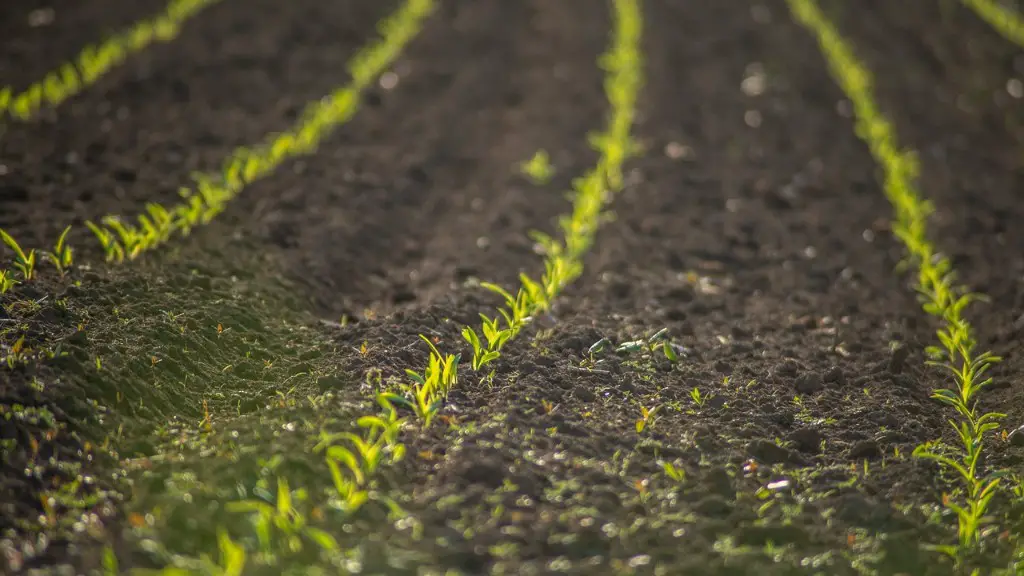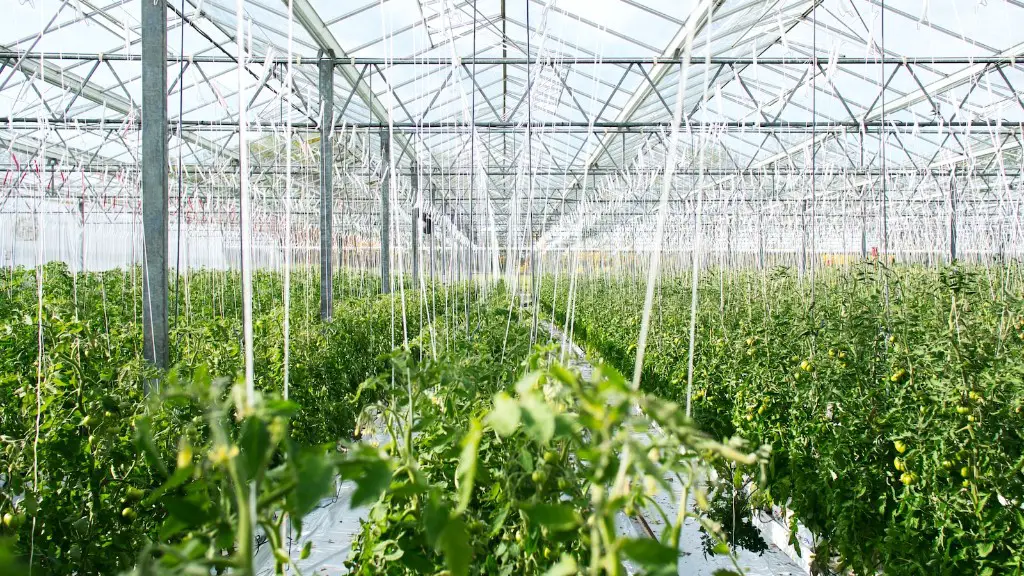Intensive subsistence agriculture is a type of subsistence farming that is most common in areas with dense population. It has been practiced in many parts of the world for centuries, and is the most efficient way to produce food in a limited space. There are two main types of intensive subsistence agriculture: terrace agriculture and irrigated agriculture.
Terrace Agriculture
Terrace agriculture is a type of intensive subsistence farming that involves the cultivation of land on slopes, or terraces. This is an ancient form of farming that has been practiced for centuries, especially in areas with steep slopes, limited land space, or low-fertility soil. The cultivation of terraced land requires significant labor and innovation, but is one of the most efficient uses of land for the production of food. It involves the construction of terraces which are leveled and planted with crops. Crops are then rotated to maintain fertility. This type of farming is labor intensive and yields are usually low but it is well-suited to mountainous terrain where other forms of intensive cultivation are not possible.
Irrigated Agriculture
Irrigated agriculture is a type of intensive subsistence farming that involves the use of an irrigation system to water the land. This type of farming is practiced in areas with limited rainfall. The irrigation system is designed and built to maximize productivity, while ensuring that water use is sustainable. Irrigation systems may be built to collect and store rainwater, or to distribute streams or rivers. Irrigation techniques such as drip irrigation, flood irrigation, and gravity-fed systems are used to ensure that the crops receive the optimal amount of water for optimal yield. This type of farming is highly productive, but requires substantial investment in infrastructure and the use of specialized equipment.
Benefits of Intensive Subsistence Agriculture
Intensive subsistence agriculture provides numerous benefits for communities who practice this type of farming. It is efficient and sustainable, allowing farmers to produce enough food to feed their families and even surplus to sell in local markets. It is also an important source of income, allowing farmers to generate income to support their families. It is also an important cultural practice, with many societies having a deep-rooted relationship with the land. Finally, it is an important source of biodiversity, allowing farmers to practice traditional varieties of crops, and to maintain the agricultural biodiversity of their region.
Challenges of Intensive Subsistence Agriculture
Despite its many benefits, intensive subsistence agriculture also has its challenges. It is labor intensive, often requiring long and hard work with little reward. It is also vulnerable to environmental factors such as drought and unpredictable weather. Finally, it can be difficult to access the resources and infrastructure needed to practice this type of farming. These challenges can limit the productivity of intensive subsistence agriculture and make it difficult for communities to benefit from it.
Impacts of Intensive Subsistence Agriculture
Intensive subsistence agriculture has a significant impact on the environment, society, and economy. The land used for this type of farming is vulnerable to erosion due to the steep slopes and intensive work needed, while the overuse of resources, such as water and fertilizer, can have a negative effect on the environment. It can also place a heavy burden on the labor force, as the long hours and low pay can make it difficult for farmers to support their families. Finally, the lack of access to resources and infrastructure can limit its economic potential, keeping many communities in poverty.
Development of Intensive Subsistence Agriculture
In recent years, there have been a number of efforts to improve the productivity and economic potential of intensive subsistence agriculture. Governments and international organizations have introduced a variety of initiatives and programs to support small-scale farmers and communities who rely on this type of farming for their livelihoods. These initiatives include technology transfer, access to credit, and access to markets. These efforts are aimed at not only improving yields, but also promoting sustainable land use and supporting local communities.
Climate Change Impacts on Intensive Subsistence Agriculture
Climate change is having a significant impact on intensive subsistence agriculture and the communities who rely on it for their livelihoods. The increasing intensity and frequency of drought and unpredictable weather patterns is making it difficult for farmers to predict yields. This is compounded by the fact that traditional varieties of crops are not adapted to climate change, making it difficult to protect yields. Finally, rising temperatures are also making it difficult to grow certain crops, as well as increasing the risk of crop diseases, pests, and plant diseases.
Technological Solutions for Intensive Subsistence Agriculture
In response to the impacts of climate change, a number of technological solutions have been developed to help communities that rely on intensive subsistence agriculture. These solutions include the use of weather forecasting and early warning systems to predict weather patterns and prepare for extreme weather. Technologies such as drip irrigation, water harvesting, and water storage systems are being developed to help farmers achieve more efficient and sustainable water use. Finally, research is being conducted into the development of crops which are more resilient to climate change, allowing farmers to continue to produce food in the face of changing weather patterns.


